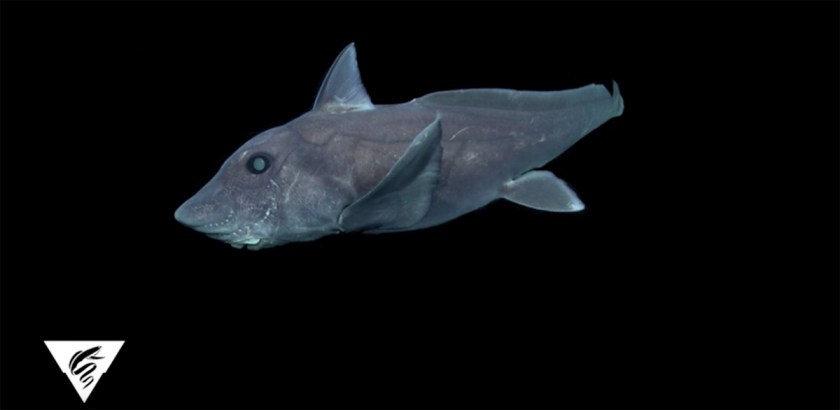
We don’t know about you, but anything involving the deep, dark sea and pointy-toothed predators with dead-looking eyes makes us shiver just thinking about it. Recent footage of the eerie “ghost shark” alive in its natural habitat for the first time ever certainly got our attention. Add in the fact that it was swimming around in North American waters, and we’re practically in hiding.
But enough about our shortcomings. It’s true that the oceans cover two-thirds of the Earth’s surface, so clearly, it’s impossible to come into contact with every underwater species in a single lifetime. But researchers from the Monterey Bay Aquarium Research Institute (MBARI) in California, diving off the coasts of Hawaii and Central California, recently came into contact with a particularly elusive species of “shark,” which had only thenceforth been seen in the Southeastern Pacific region. (This all was recently published in a science journal by the group of researchers from MBARI.)
First identified in 2002 and given the name Hydrolagus trolli (or “the pointy-nosed blue chimaera”), it was a known inhabitant of deep sea areas near Australia, New Zealand, and North Caledonia (a French territory in the Pacific). But since the publishing of the paper by MBARI, it is now known to have made the trans-global trek.
Technically, a chimaera is not a shark—but they have a lot of similarities, including mostly boneless, cartilaginous frames and a single find up top. The term “chimaera” borrows from the ancient greek sea monster, which had the body and head of a lion, second head of a goat, and tale of a serpent. While this fishy version isn’t quite the looker from the Iliad, it’s still one of the true ugly ducklings of the sea, often referred to either as the aforementioned “ghost shark,” or the slightly more ridiculous “rabbitfish” or “ratfish.” There are 38 known species of chimaeras that criss-cross the globe, so that’s quite a bit of ugly you might have the chance of coming into contact with on your next deep-sea diving adventure.
For more from MBARI on the discovery, click here. To read MBARI’s original study, published in Marine Biodiversity Records, click here. Below, watch a video of the creepy looking “ghost shark” in action.
This article was featured in the InsideHook newsletter. Sign up now.























